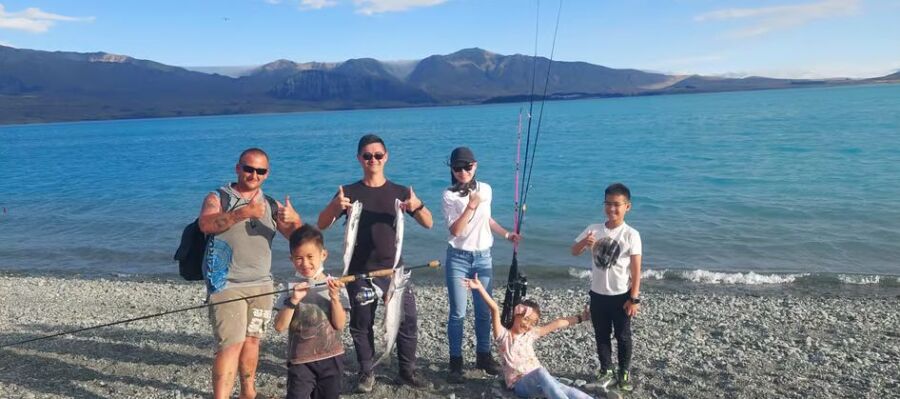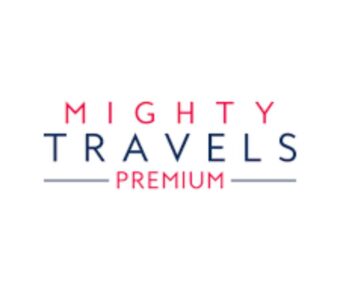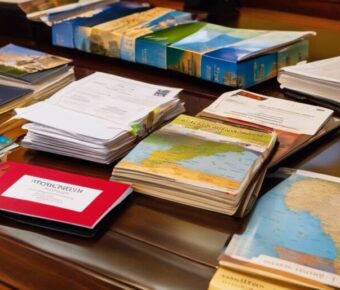
New Zealand Fly Fishing Trip Cost: 7 Days Under $2500
Planning a fly fishing trip to New Zealand? Get ready for an unforgettable adventure in some of the world’s most stunning waters. The South Island offers incredible trout fishing opportunities, but you might be wondering about the costs. Guided fly fishing trips in New Zealand cost between $750 and $1000 NZD per day on average. This usually covers an experienced guide, equipment, and sometimes lunch.
New Zealand’s crystal-clear rivers and lakes are a fly fisher’s dream. You’ll cast your line surrounded by breathtaking mountains and lush forests. The pristine waters teem with large brown and rainbow trout, giving you a chance at the catch of a lifetime.
Your budget will shape your trip. You can save money by planning your own outings or splurge on all-inclusive luxury lodges. No matter what you choose, the memories of battling trophy trout in this angler’s paradise will last forever.
Contents
- Key Takeaways
- Understanding Fly Fishing in New Zealand
- The Appeal of New Zealand’s Fly Fishing
- Fish Species and Best Times to Visit
- Trip Costs and Budgeting
- Accommodation Types and Rates
- Guided Fishing Trip Expenses
- Additional Costs and Savings Tips
- Fishing Licenses and Regulations
- The Range of Fishing Experiences
- From Heli-Fishing to Stream Fishing
- Selecting a Fishing Guide
- Customizable Fly Fishing Packages
- Equipment and Casting Techniques
- Essential Gear for New Zealand Waters
- Mastering the Art of Fly Casting
- Choosing Your Fishing Spots
- Accommodation and Lodging
- Travel Itinerary Planning
- More Travel Guides
Key Takeaways
- Guided fly fishing trips in New Zealand cost $750-$1000 NZD per day on average
- New Zealand’s South Island offers world-class trout fishing in stunning natural settings
- Trip costs vary widely based on guiding services, lodging, and trip length
Understanding Fly Fishing in New Zealand
New Zealand offers some of the world’s best fly fishing. The country’s clear rivers and pristine lakes are home to big trout that draw anglers from around the globe.
The Appeal of New Zealand’s Fly Fishing

You’ll find fly fishing in New Zealand unlike anywhere else. The water is so clear you can spot fish from the riverbank. It’s like hunting – you stalk your prey and make the perfect cast. The scenery is breathtaking too. Picture snow-capped mountains and lush forests as your backdrop.
New Zealand’s trout are big and wild. The average fish is 3-4 pounds, but 10+ pounders aren’t uncommon. You’ll mostly catch rainbow and brown trout. Some rivers have sea-run brown trout that grow huge in the ocean before returning to spawn.
The best part? You don’t need a boat. Most fishing is done by wading or from the shore. This keeps costs down and lets you explore remote backcountry spots.
Fish Species and Best Times to Visit
Rainbow and brown trout are the main targets. You’ll find them in rivers and lakes across both islands. The South Island is famous for its big brown trout. Some reach trophy size of 10+ pounds.
October to April is prime time for fly fishing. The weather’s warmer and fish are more active. Early season (Oct-Dec) is great for hungry post-spawning trout. Late season (Feb-Apr) sees fat pre-spawning fish.
Summer (Dec-Feb) offers the most consistent fishing. But it’s also the busiest time. Consider shoulder seasons for fewer crowds. Some waters fish well year-round, especially spring-fed rivers.
Trip Costs and Budgeting

Planning a fly fishing trip to New Zealand can be pricey, but there are ways to keep costs down. Let’s break down the main expenses and look at some money-saving tips.
Accommodation Types and Rates
Where you stay can make a big difference in your budget. Fishing lodges offer comfort and convenience but come with a hefty price tag. Expect to pay $300-$500 per night for a high-end lodge.
For a cheaper option, look into backcountry huts. These basic shelters cost around $15-$30 per night. They’re rustic but put you right in the heart of prime fishing spots.
Hotels and motels in fishing towns like Turangi or Te Anau range from $80-$200 per night. For long stays, consider renting a holiday home. Weekly rates often work out cheaper than nightly hotel costs.
Camping is the most budget-friendly choice. Department of Conservation campsites charge $8-$15 per person. Some are even free!
Guided Fishing Trip Expenses
Hiring a guide is pricey but can be worth it, especially if you’re new to NZ fishing. Full-day guided trips usually run $600-$900 for 1-2 anglers. This often includes gear, transport, and lunch.
Half-day trips cost less, around $400-$600. Some outfitters offer multi-day packages. A 5-day guided trip might set you back $3000-$5000 per person.
If you’re an experienced angler, you can save by going solo. A season fishing license costs about $160 for non-residents. Daily and weekly options are also available.
Additional Costs and Savings Tips

Don’t forget about transport. Renting a car gives you freedom to explore different fishing spots. Budget $40-$80 per day for a small car.
Flights to NZ can be expensive. Try to book well in advance or look for deals on flight comparison sites. Traveling in the shoulder season (March-April or September-October) can save you money on both flights and accommodation.
Bring your own gear if possible. Renting equipment can add up quickly. Pack a few essentials like flies and leaders to avoid costly purchases in NZ.
Eating out is costly. Save by cooking your own meals. Many lodges and holiday homes have kitchens. Stock up on groceries in larger towns where prices are lower.
Fishing Licenses and Regulations

You’ll need a fishing license before casting your line in New Zealand’s pristine waters. Every angler, regardless of age, must have a valid Sports Fishing Licence. Don’t forget to carry it with you on the river!
There are different license types to choose from:
- Full Season (Oct 1 – Sep 30)
- 24-hour
- Winter (Apr 1 – Sep 30)
- Family (covers 2 adults and children under 18)
Prices vary, but expect to pay around NZ$160 for a full season non-resident license. Short-term options are more budget-friendly if you’re just visiting.
Pro tip: Buy your license online through Fish & Game NZ before your trip. It’s quick and easy!
Some popular fishing spots now require an extra Designated Waters Licence (DWL) for non-residents. This daily charge applies to heavily-fished rivers. You can get a DWL for up to 5 days per region.
When packing your gear, remember that felt-soled waders are banned to prevent the spread of didymo algae. Stick to rubber soles and always clean your equipment between waterways.
Be sure to check local regulations for catch limits and seasonal restrictions. Some areas have special rules to protect fish populations.
The Range of Fishing Experiences

New Zealand offers fly fishing adventures to suit every angler’s taste and skill level. From remote mountain streams to scenic helicopter rides, you’ll find a wide variety of options to make your trip unforgettable.
From Heli-Fishing to Stream Fishing
Heli-fishing takes you to hard-to-reach spots teeming with trout. A chopper whisks you away to pristine waters where few have fished before. It’s pricey but worth it for the views and exclusive access.
Stream fishing is more budget-friendly. You’ll wade through crystal-clear rivers, casting for wily brown and rainbow trout. Some spots are just a short drive from town, while others need a bit of hiking to reach.
Lake fishing from boats or the shore gives you a shot at trophy-sized fish. Many lodges offer guided trips on famous waters like Lake Taupo or Lake Wanaka.
Selecting a Fishing Guide
A good guide can make or break your trip. Look for someone with years of local knowledge who can match your skill level and preferences.
Ask about their catch rates and what gear they provide. Some guides specialize in teaching beginners, while others focus on challenging spots for experts.
Prices vary widely. Expect to pay around $750 NZD for a full day with one or two anglers. Multi-day trips often offer better value.
Read reviews from past clients. A great guide will not only put you on fish but also share stories and make your day fun.
Customizable Fly Fishing Packages
Many outfitters offer packages that bundle lodging, meals, and guided fishing. These can save you money and hassle compared to booking everything separately.
Basic packages might include a few days of guided fishing with simple accommodations. Luxury options add gourmet meals, high-end lodges, and extra activities like wine tours.
You can often mix and match elements to create your perfect trip. Want to fish hard for three days, then relax at a spa? No problem.
Some packages include gear rental, which is handy if you don’t want to lug your stuff overseas. Others might throw in extras like professional photos of your catch.
Equipment and Casting Techniques

Fly fishing in New Zealand requires the right gear and skills to make the most of your trip. Let’s look at what you’ll need and how to improve your casting.
Essential Gear for New Zealand Waters
You’ll want to pack light but smart for your Kiwi fly fishing adventure. A 9-foot 5-weight rod is versatile enough for most situations. Pair it with a good quality reel and floating line. Don’t forget backup leaders and tippets – the fish here can be picky!
Waders are a must for cold mountain streams. Choose breathable ones to stay comfy all day. Bring polarized sunglasses to spot trout in clear waters. A sturdy net, fly box, and nippers round out your basics.
For flies, stock up on local patterns like the Woolly Bugger and Hare’s Ear Nymph. Ask local shops for hot flies when you arrive. They know what’s working best.
Mastering the Art of Fly Casting
New Zealand’s big, wary trout demand precise casts. Practice your accuracy before your trip. The basic overhead cast is your bread and butter. Start with the rod tip low, lift smoothly to 2 o’clock, then forward to 10 o’clock. Stop abruptly to let the line unfurl.
For longer casts, try the double haul. This adds power by pulling line with your free hand during the back and forward casts. It takes practice but pays off for reaching distant fish.
Wind is common here, so learn the roll cast too. It keeps your line low and works in tight spots. Just lift the rod tip, then flick it forward while the line’s still on the water.
Choosing Your Fishing Spots

When you’re planning your New Zealand fly fishing trip, picking the right spots can make or break your experience. Lucky for you, this country is packed with pristine rivers teeming with trophy-sized trout.
Start by researching some of the famous NZ rivers. The Tongariro and Mohaka in the North Island are great choices. In the South Island, you can’t go wrong with the Mataura or Oreti.
But don’t just stick to the well-known spots. Ask locals or hire a guide to find hidden gems. These lesser-known areas often have fewer anglers and more fish.
Day trips are a budget-friendly way to explore different fishing spots. You can base yourself in a town and drive to nearby rivers each day. This saves on accommodation costs and lets you try various locations.
Remember to check fishing regulations for each spot. Some areas have catch limits or require special permits. It’s best to be prepared so you don’t run into any issues.
With a bit of planning, you’ll find the perfect fishing spots for your NZ adventure. Just don’t forget to enjoy the stunning scenery while you’re at it!
Accommodation and Lodging

When planning your New Zealand fly fishing trip, you’ll need to consider where to rest your head after long days on the water. Fishing lodges are a popular choice, offering a mix of comfort and convenience. These specialized retreats cater to anglers, often providing meals, gear storage, and easy access to prime fishing spots.
Prices for fishing lodges can vary widely. Depending on the level of luxury and included amenities, you might pay anywhere from $200 to $1000 per night. Some packages bundle lodging with guided fishing trips, which can save you money overall.
For budget-conscious travelers, there are cheaper options. Motels and holiday parks near fishing areas can cost as little as $50-100 per night. These basic accommodations give you a place to sleep and shower, but you’ll need to handle your own meals and transportation.
If you’re feeling adventurous, camping is another wallet-friendly choice. Many rivers have nearby campgrounds where you can pitch a tent for $10-20 per night. Just remember to pack warm gear – New Zealand nights can get chilly!
For longer stays, vacation rentals offer a home-away-from-home feel. Renting a house or cabin gives you more space and the ability to cook your own meals. Prices start around $100 per night for basic properties and go up from there.
Whatever your budget, book early. The best spots fill up fast during peak fishing seasons!
Travel Itinerary Planning

Planning your New Zealand fly fishing adventure can be exciting and a bit overwhelming. You’ll want to make the most of your time chasing those elusive trout in stunning landscapes.
Start by deciding how long you can stay. A week gives you a good taste, but two weeks or more lets you really explore. Pick a region to focus on – the South Island is popular for its diverse fishing spots.
Consider mixing camping with lodges for a budget-friendly trip. Many rivers have nearby campsites, perfect for waking up right by the water. Book a guided fly fishing day trip to learn the local secrets.
Don’t forget your fishing license! You can buy it online before you go. It’s required for all anglers, even kids.
Think about transport too. Renting a car gives you freedom to explore remote spots. But if you’re nervous about driving, joining a fishing package tour might be better.
Remember to build in some rest days. Fishing all day can be tiring, and you’ll want time to enjoy other Kiwi experiences too. Maybe try mountain biking or visiting a winery.
Lastly, be flexible. Weather can change quickly in New Zealand, affecting river conditions. Having a backup plan means you’ll always have somewhere to cast your line.



